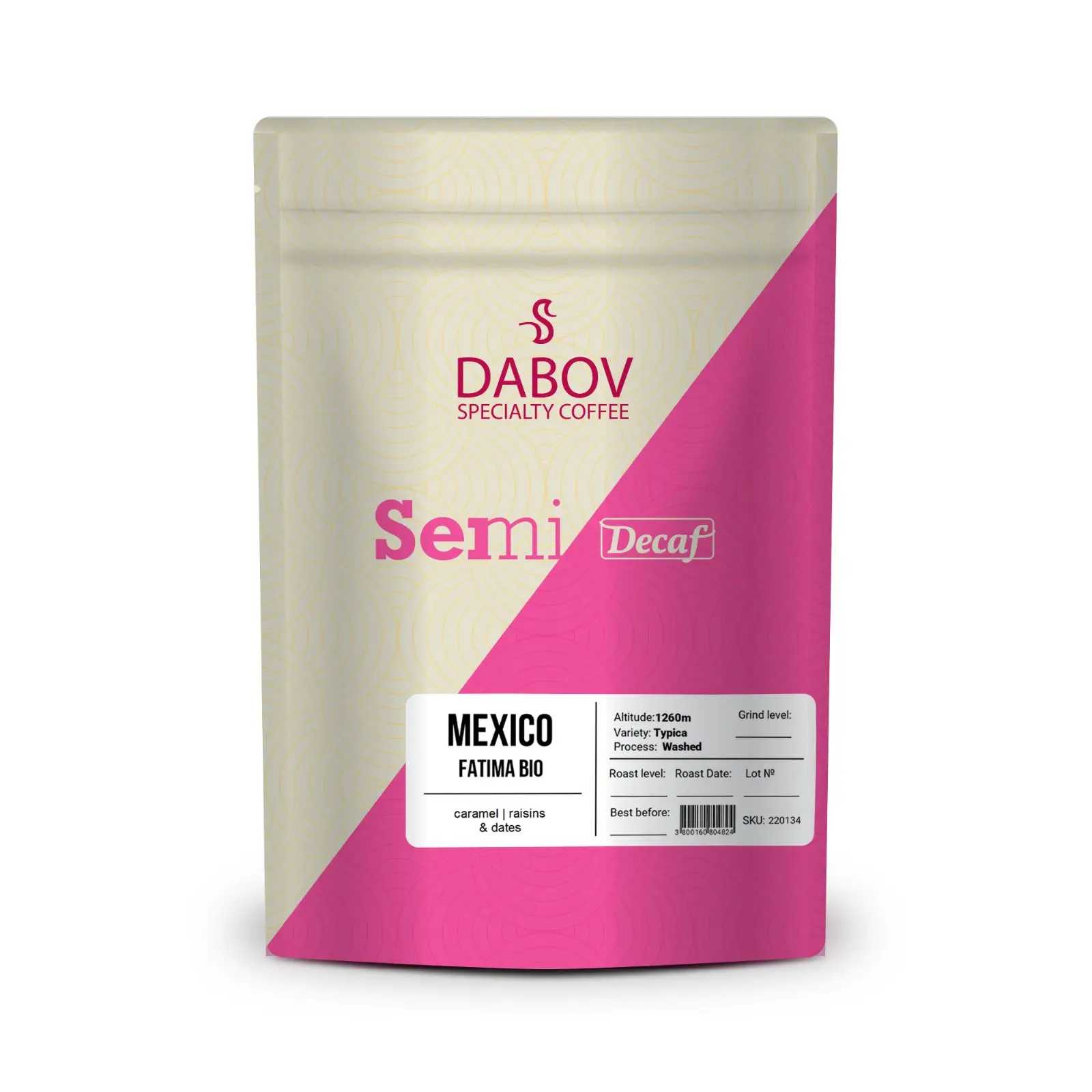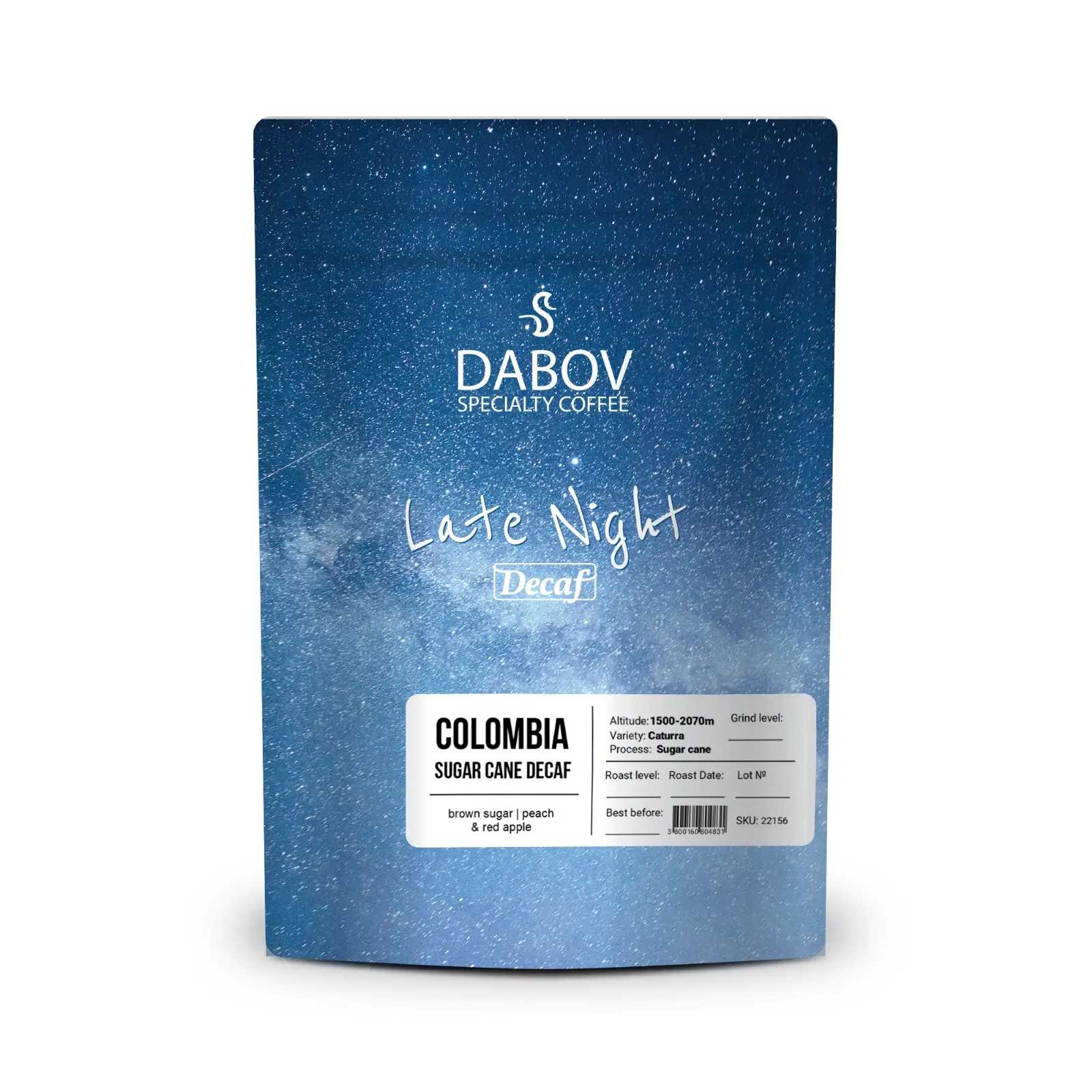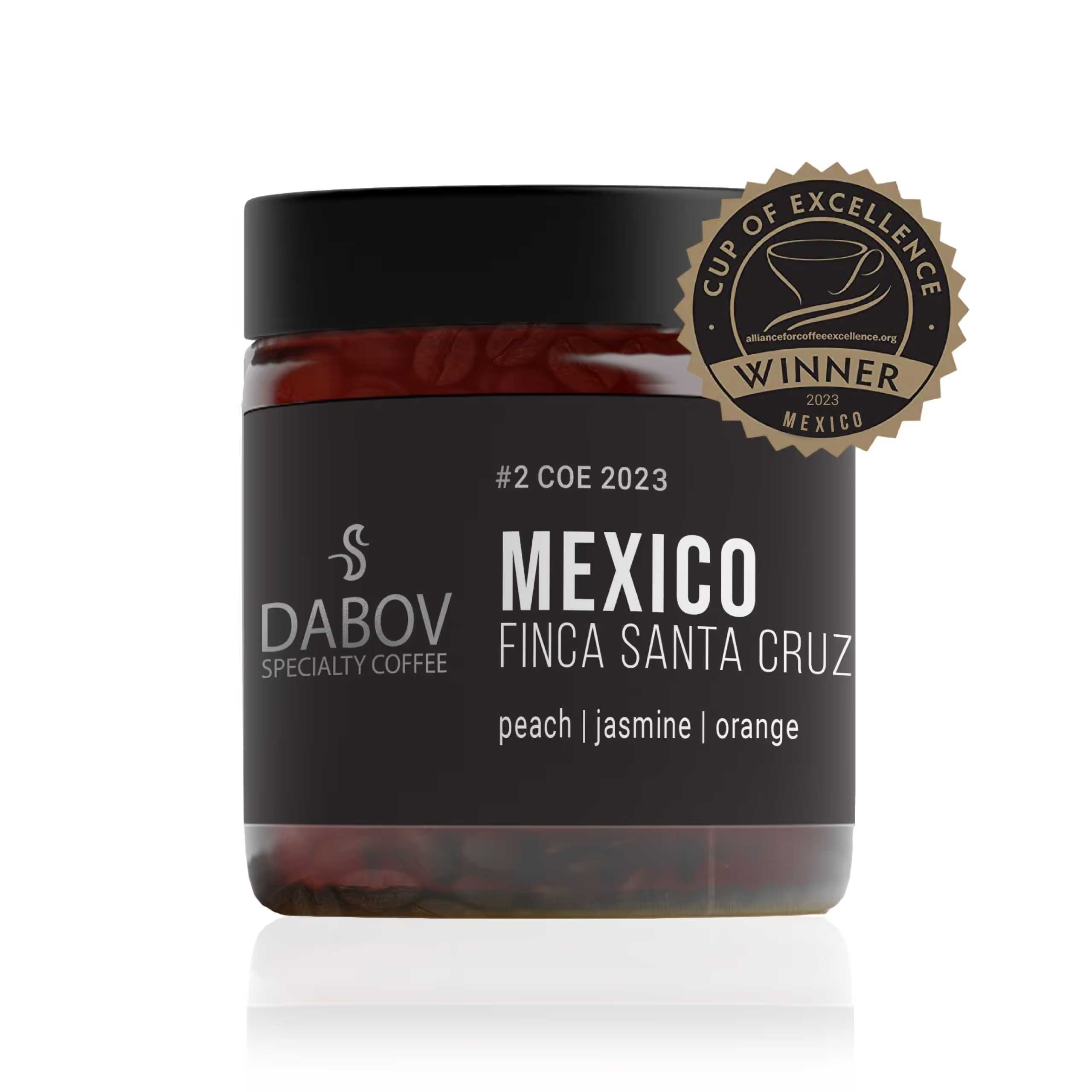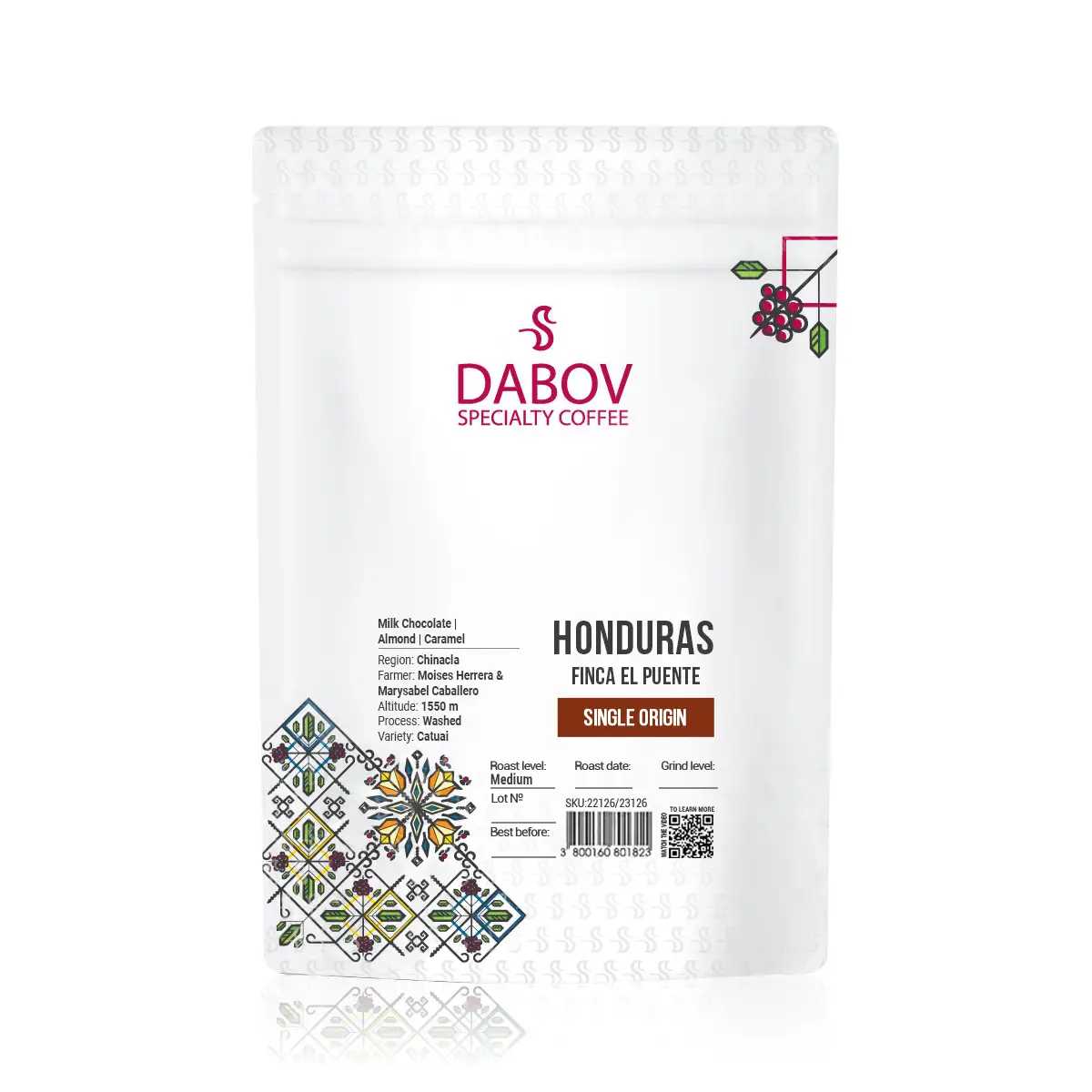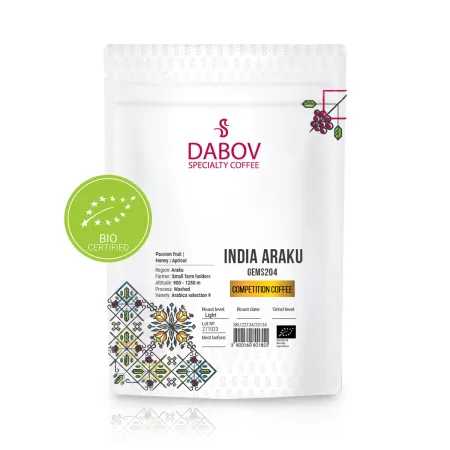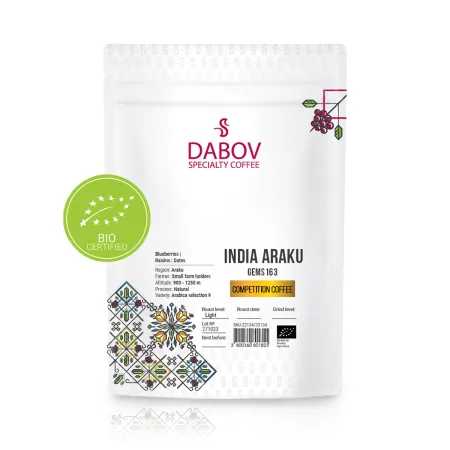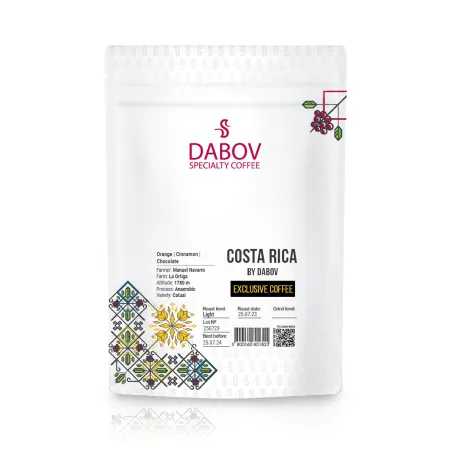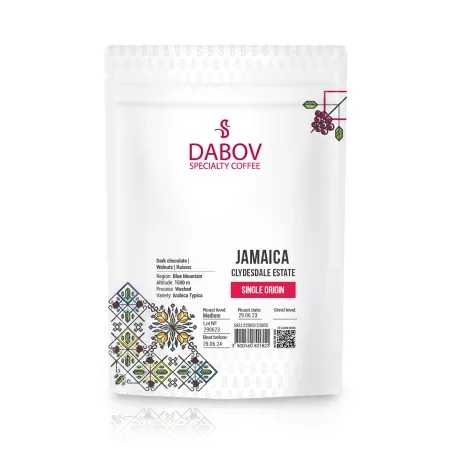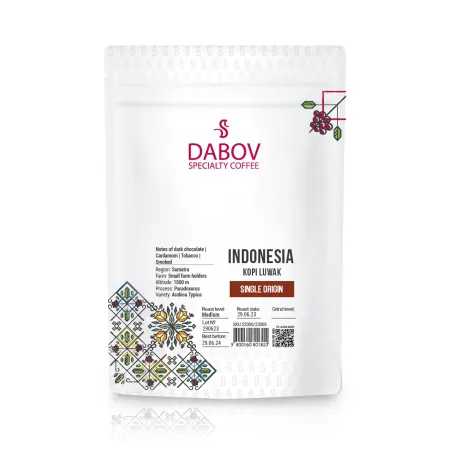The Ultimate Checklist for Setting Up Your Home Coffee Bar
Transform your coffee experience with the ultimate home coffee bar. This comprehensive checklist guides you through understanding the concept, benefits, and essential gear needed for your coffee bar setup. Discover how to choose the right coffee maker, the importance of quality coffee beans, and tips for organizing your coffee station. From brewing techniques to personal touches, learn to create a cozy corner that reflects your style. Whether a novice or a coffee aficionado, elevate your daily ritual and explore the joy of crafting personalized beverages right in your home. Let's embark on this caffeinated journey together and redefine your coffee moments!
In recent years, the allure of creating a personal coffee haven within the comfort of one's home has gained significant traction among coffee enthusiasts and casual drinkers alike. This rising trend of home coffee bars has revolutionized the way we experience our daily brew, offering unparalleled convenience, customization, and a touch of luxury to our morning routines. As the aroma of freshly ground beans fills the air and the gentle hum of brewing equipment becomes a familiar soundtrack, more and more individuals are discovering the joy of crafting their perfect cup without stepping foot outside their door. This comprehensive guide serves as your ultimate checklist for setting up a home coffee bar that rivals your favorite café, ensuring you have all the essential elements to elevate your coffee game to new heights.
Introduction
The concept of a home coffee bar has evolved from a simple countertop setup to an elaborate, personalized space dedicated to the art of brewing. This transformation reflects a growing appreciation for quality coffee and the ritual of its preparation. As we delve into the world of home coffee bars, we'll explore not just the equipment and accessories that make up the physical space, but also the knowledge and techniques that transform a ordinary coffee corner into a true connoisseur's domain.
This article aims to provide you with a detailed, step-by-step checklist for creating your ideal home coffee bar. From selecting the right equipment to mastering various brewing methods, we'll cover every aspect you need to consider. Whether you're a seasoned barista looking to bring your skills home or a coffee lover eager to expand your horizons, this guide will serve as your comprehensive roadmap to coffee nirvana.
Section 1: Understanding the Home Coffee Bar Concept
1.1 What is a Home Coffee Bar?
A home coffee bar is more than just a collection of coffee-making equipment; it's a dedicated space within your home that embodies your passion for coffee. It's a personal sanctuary where the art and science of coffee brewing converge, allowing you to experiment, refine, and ultimately perfect your coffee-making skills. This concept has gained significant traction in recent years, evolving from a simple countertop arrangement to elaborate setups that rival professional cafés.
At its core, a home coffee bar is a reflection of your individual taste and style. It can be as simple as a neatly organized corner in your kitchen or as complex as a fully equipped station with multiple brewing methods at your fingertips. The key elements typically include a high-quality coffee maker or espresso machine, a reliable grinder, fresh beans, and an array of accessories designed to enhance your brewing process and overall coffee experience.
The rise of the home coffee bar concept can be attributed to several factors. Firstly, there's been a growing appreciation for specialty coffee and the nuances of different brewing methods. Coffee enthusiasts are no longer satisfied with a basic drip machine and pre-ground beans; they crave the ability to experiment with various techniques and flavors. Secondly, the advent of more affordable, high-quality home brewing equipment has made it possible for consumers to replicate café-quality beverages in their own kitchens. Lastly, the recent global shift towards spending more time at home has accelerated this trend, with many people seeking to recreate their favorite coffee shop experiences within their own four walls.
A well-designed home coffee bar serves as a focal point in your daily routine, transforming the act of making coffee from a mundane task into a cherished ritual. It's a space where you can start your day with intention, experiment with new recipes, and even entertain guests with your barista skills. As we delve deeper into the components of a home coffee bar, keep in mind that this concept is highly customizable and should ultimately reflect your personal coffee journey and preferences.
1.2 Benefits of Having a Home Coffee Bar
The advantages of setting up a home coffee bar extend far beyond the convenience of having your favorite brew at your fingertips. Let's explore the multifaceted benefits that make this investment in your coffee experience worthwhile.
First and foremost, a home coffee bar offers unparalleled cost-effectiveness in the long run. While the initial setup may require some investment, the savings accumulate quickly when you consider the price of daily café visits. High-quality coffee beans, even when sourced from specialty roasters, are significantly more economical when brewed at home compared to purchasing prepared drinks from coffee shops. This financial benefit allows you to enjoy premium coffee more frequently without straining your budget.
Convenience is another major advantage of a home coffee bar. Imagine waking up to the aroma of freshly ground beans and having your perfect cup ready in minutes, without the need to dress up, drive to a café, or wait in line. This time-saving aspect is particularly valuable in our fast-paced world, allowing you to enjoy quality coffee even on the busiest mornings.
Perhaps the most significant benefit is the level of customization and control a home coffee bar provides. You have the freedom to experiment with different beans, roasts, and brewing methods to find your ideal combination. You can adjust every variable – from grind size to water temperature – to suit your taste preferences. This level of control is rarely possible in a commercial setting and allows you to truly tailor your coffee experience.
A home coffee bar also serves as a platform for developing and honing your coffee-making skills. As you experiment with various techniques and equipment, you'll gain a deeper understanding and appreciation for the art of coffee brewing. This knowledge not only enhances your own coffee experience but also makes you a gracious host, able to offer guests a range of impressive coffee options.
From an environmental perspective, a home coffee bar can significantly reduce waste associated with takeaway cups and single-use packaging. By using reusable filters, cups, and storing beans in airtight containers, you're making a positive impact on the environment while enjoying your daily brew.
Lastly, a well-designed coffee bar adds aesthetic value to your home. It can serve as a stylish focal point in your kitchen or living area, reflecting your personal taste and adding a touch of sophistication to your space. The visual appeal of gleaming equipment and neatly arranged accessories can turn a mundane corner into an inviting nook that draws both eye and palate.
As we move forward in this guide, keep these benefits in mind. They serve as motivation for creating a home coffee bar that not only meets your practical needs but also enriches your daily life in numerous ways.
Section 2: Home Coffee Bar Checklist
2.1 Essential Coffee Gear
Creating the perfect home coffee bar begins with assembling the right equipment. This section of our home coffee bar checklist focuses on the essential gear you'll need to transform a corner of your space into a fully functional coffee station. From brewing devices to accessories, we'll cover everything you need to know to make informed decisions about your coffee bar setup.
Coffee Maker Options
The cornerstone of any home coffee bar is the brewing device. The market offers a wide array of options, each with its unique features and brewing styles. Let's explore some popular choices:
- Drip Coffee Makers: These are the workhorses of many home coffee bars, offering convenience and the ability to brew larger quantities. Modern drip machines have come a long way, with some models featuring programmable settings, built-in grinders, and temperature control. For those on a budget, a simple Mr. Coffee machine can suffice, while coffee enthusiasts might opt for higher-end models from brands like Technivorm Moccamaster or Breville Precision Brewer.
- Espresso Machines: For those who crave the rich, concentrated flavor of espresso or enjoy milk-based drinks like cappuccinos and lattes, an espresso machine is a must. Entry-level options like the DeLonghi EC155 offer a good starting point, while prosumer models like the Rancilio Silvia provide cafe-quality results for the dedicated home barista.
- French Press: This classic brewing method is beloved for its simplicity and ability to produce a full-bodied cup of coffee. Brands like Bodum and Frieling offer durable, stylish options that make a great addition to any coffee bar.
- Pour-Over Devices: Pour-over brewing has gained popularity for its ability to highlight the nuanced flavors of single-origin coffees. Options range from the iconic Chemex to the more portable Hario V60.
- AeroPress: This versatile, compact brewer is perfect for those who want to experiment with different recipes and brewing styles. It's also an excellent choice for coffee bars with limited space.
When selecting your primary brewing device, consider factors such as the volume of coffee you typically consume, the types of coffee drinks you enjoy, and the level of hands-on involvement you prefer in the brewing process.
Quality Coffee Beans
The foundation of any great cup of coffee is the beans themselves. Investing in high-quality, freshly roasted coffee beans is crucial for achieving the best flavor in your brews. Here are some key points to consider:
- Freshness: Look for beans with a recent roast date, ideally within the last two weeks. Freshly roasted beans offer the most vibrant flavors and aromas.
- Whole Beans vs. Pre-Ground: Always opt for whole beans and grind them just before brewing. This preserves the coffee's flavors and allows you to adjust the grind size for different brewing methods.
- Origin and Roast Level: Experiment with beans from different regions and roast levels to discover your preferences. Light roasts tend to highlight the bean's unique characteristics, while darker roasts offer a bolder, more intense flavor.
- Storage: Store your beans in an airtight container away from light, heat, and moisture. Consider investing in a vacuum-sealed container for optimal freshness.
- Sourcing: Explore local roasters in your area, as they often provide the freshest beans and unique, seasonal offerings. Online subscription services like Atlas Coffee Club or Trade Coffee can also introduce you to a variety of high-quality beans from around the world.
Remember, the quality of your beans will significantly impact the taste of your coffee, regardless of your brewing method or equipment.
Grinding Tools
A good grinder is perhaps the most crucial piece of equipment in your home coffee bar after the brewing device itself. The grinder allows you to unlock the full potential of your coffee beans by ensuring a consistent grind size, which is essential for even extraction. Let's compare the two main types of grinders:
- Burr Grinders:
- Electric Burr Grinders: These offer consistency and convenience. Entry-level models like the Baratza Encore provide excellent value, while higher-end options like the Fellow Ode or Eureka Mignon specialize in specific brewing methods.
- Manual Burr Grinders: Perfect for those who enjoy a more hands-on approach or need a portable option. The Hario Skerton and 1Zpresso JX-Pro are popular choices.
- Blade Grinders: While less expensive, blade grinders produce inconsistent results and are generally not recommended for serious coffee enthusiasts.
When choosing a grinder, consider factors such as grind consistency, noise level, ease of cleaning, and whether it can produce the range of grind sizes you need for your preferred brewing methods.
Brewing Accessories
To round out your home coffee bar checklist, you'll need a selection of accessories that enhance your brewing process and overall coffee experience:
- Scale: A digital scale with 0.1g precision is essential for consistent, repeatable brews. The Acaia Pearl or Hario V60 Drip Scale are excellent options.
- Thermometer: For methods requiring precise water temperatures, a digital thermometer or a kettle with built-in temperature control is invaluable.
- Filters: Stock up on appropriate filters for your chosen brewing method. Consider eco-friendly options like reusable cloth filters or compostable paper filters.
- Water Kettle: A gooseneck kettle provides precise pour control for methods like pour-over. The Fellow Stagg EKG offers temperature control and a sleek design.
- Milk Frother: For those who enjoy lattes and cappuccinos, a milk frother is a must. Options range from handheld frothers to more advanced automatic machines.
- Tamper and Distribution Tool: Essential for espresso enthusiasts, these tools help ensure even extraction.
- Cleaning Supplies: Brushes, descaling solutions, and microfiber cloths to keep your equipment in top condition.
- Storage Solutions: Canisters for beans, knock boxes for spent grounds, and organizers for your various tools and accessories.
By carefully selecting each piece of equipment and accessory, you're laying the groundwork for a home coffee bar that not only meets your needs but also inspires you to explore the vast world of coffee brewing.
2.2 Coffee Station Setup
Once you've gathered your essential coffee gear, the next step in your home coffee bar checklist is to create an efficient and aesthetically pleasing setup. A well-organized coffee station not only enhances your brewing experience but also turns the act of making coffee into a delightful ritual. Let's dive into the key aspects of setting up your coffee bar.
Choosing the Right Location
The location of your coffee bar is crucial for both functionality and enjoyment. Here are some factors to consider when selecting the perfect spot:
- Accessibility: Choose a location that's easily accessible, ideally in or near the kitchen. This ensures that you can quickly grab a cup in the morning or when entertaining guests.
- Counter Space: Ensure you have enough counter space to accommodate your equipment and allow for comfortable brewing. A minimum of 24 inches of uninterrupted counter space is recommended for a basic setup.
- Electrical Outlets: Proximity to electrical outlets is essential for powering your coffee maker, grinder, and other electrical equipment. Consider the cord length of your devices and the number of outlets you'll need.
- Water Source: Being close to a water source makes it convenient to fill your coffee maker or kettle. If possible, position your coffee bar near the sink or consider installing a dedicated water line for high-end espresso machines.
- Natural Light: A spot with good natural light not only makes your coffee bar more inviting but also helps you better assess the color and consistency of your brews.
- Traffic Flow: Ensure your coffee bar doesn't obstruct the natural flow of traffic in your kitchen or living space.
- Storage: Consider nearby storage options for beans, equipment, and accessories. Upper cabinets or open shelving above the coffee bar can be ideal for storing mugs and less frequently used items.
Remember, the perfect location balances practicality with the joy of the coffee-making experience. It should feel like a special nook within your home, inviting you to start your day or take a relaxing break.
Design and Aesthetics
The visual appeal of your coffee bar can significantly enhance your overall coffee experience. Here are some design considerations to create an inviting and stylish coffee station:
- Color Palette: Choose a color scheme that complements your existing décor. Warm, earthy tones like browns, beiges, and deep reds can create a cozy, café-like atmosphere. Alternatively, a clean, monochromatic look with whites and grays can give a modern, sleek appearance.
- Materials: Incorporate materials that are both functional and visually appealing. Wooden elements can add warmth, while stainless steel accents provide a professional look. Consider a marble or quartz countertop for easy cleaning and a luxurious feel.
- Lighting: Good lighting is crucial for both functionality and ambiance. Under-cabinet LED lights can illuminate your workspace, while a small pendant light above the coffee bar can create a focal point.
- Backsplash: A unique backsplash can add character to your coffee bar. Consider tiles with coffee-themed patterns or a chalkboard backsplash where you can write your favorite coffee quotes or daily brew recipes.
- Open Shelving: Install open shelves to display your coffee gear, beans, and mugs. This not only adds visual interest but also keeps frequently used items within easy reach.
- Artwork: Incorporate coffee-themed artwork or vintage coffee advertisements to enhance the café atmosphere.
- Plants: A small potted plant or herb (like mint for tea) can add a touch of freshness and life to your coffee bar.
- Personalized Touches: Display items that reflect your personal coffee journey, such as souvenir mugs from your travels or a framed coffee bean sack from your favorite roaster.
Remember, the design of your coffee bar should not only be aesthetically pleasing but also reflect your personal style and coffee preferences.
Functional Layout
An efficient layout is key to a smooth coffee-making experience. Here's how to arrange your coffee bar for optimal workflow:
- Workflow Zones: Divide your coffee bar into zones - storage, preparation, brewing, and serving. This logical flow helps streamline the coffee-making process.
- Equipment Placement: Position your most frequently used equipment, like the coffee maker and grinder, in easily accessible spots. Less frequently used items can be stored in cabinets or on higher shelves.
- Bean Storage: Keep your coffee beans in an airtight container away from direct sunlight, heat, and moisture. A cool, dark cabinet near your grinder is ideal.
- Grinder Proximity: Place your grinder close to where you'll be brewing to minimize the time between grinding and brewing, preserving the coffee's freshness.
- Water Station: If possible, set up a dedicated water station with a filter system or keep a water pitcher nearby for easy refills.
- Mug Storage: Store mugs within easy reach, either on open shelves or hooks beneath upper cabinets.
- Accessories Organizer: Use drawer organizers or small containers to keep smaller accessories like spoons, filters, and tampers neatly arranged and easily accessible.
- Waste Management: Include a small compost bin for used grounds and a knock box for espresso pucks if applicable.
- Recipe Display: Consider adding a small bulletin board or digital display for coffee recipes and brewing ratios.
- Cleaning Station: Designate a spot for cleaning supplies to maintain hygiene and equipment longevity.
By thoughtfully arranging your coffee bar, you create a space that not only looks great but also enhances your coffee-making efficiency and enjoyment. Remember, the key is to create a layout that works best for your specific needs and brewing preferences.
Section 3: Coffee Station Tips
3.1 Enhancing Your Coffee Experience
Creating a home coffee bar is just the beginning of your journey towards coffee perfection. To truly elevate your coffee experience, consider implementing these coffee station tips that go beyond the basic setup.
Keep It Clean and Organized
Maintaining a clean and organized coffee station is crucial not only for the aesthetics of your space but also for the quality of your brews. Here's how to keep your coffee bar in top condition:
- Daily Cleaning Routine: Develop a habit of wiping down surfaces, cleaning your brewing equipment, and emptying waste after each use. This prevents the buildup of coffee oils and residue that can affect the taste of your brews.
- Deep Cleaning Schedule: Set a regular schedule for deep cleaning your equipment. This includes descaling your coffee maker, thoroughly cleaning your grinder, and sanitizing all accessories.
- Organize as You Go: Make it a practice to return items to their designated spots after use. This keeps your coffee bar tidy and ensures you can find what you need quickly.
- Use Clear Containers: Store beans, filters, and other loose items in clear, airtight containers. This not only keeps ingredients fresh but also allows you to easily see when you're running low on supplies.
- Implement a Rotation System: For coffee beans and perishable items, use a first-in, first-out system to ensure you're always using the freshest ingredients.
- Maintain Your Grinder: Regularly clean your grinder to prevent old grounds from affecting the taste of your coffee. For burr grinders, consider using grinder cleaning tablets monthly.
- Water Quality: If you're not using filtered water, clean your water reservoir regularly and consider using a water filter to improve the taste of your coffee.
- Proper Storage: Store your coffee equipment properly when not in use. For example, keep your portafilter locked in the group head of your espresso machine to maintain a consistent temperature.
By maintaining a clean and organized coffee station, you ensure that every cup you brew is as delicious as possible and that your equipment remains in excellent condition for years to come.
Personal Touches
Adding personal elements to your coffee bar not only makes the space more inviting but also turns it into a reflection of your unique coffee journey. Here are some ideas to personalize your coffee station:
- Curate a Mug Collection: Display a collection of your favorite mugs, each with its own story. This could include souvenir mugs from your travels, handmade pottery, or mugs gifted by loved ones.
- Create a Coffee Memory Wall: Frame and hang photos of memorable coffee experiences, like visits to famous cafés or coffee farms. This adds a personal touch and serves as a conversation starter.
- Showcase Your Coffee Journey: Display items that represent your coffee education, such as certificates from barista courses or books about coffee.
- Incorporate Aromatherapy: Place scented candles or essential oil diffusers near your coffee bar to enhance the sensory experience. Coffee-scented candles can create a cozy atmosphere even when you're not brewing.
- Add Greenery: Incorporate small plants or herbs that complement coffee flavors, like mint or lavender. This adds life to your space and can be used to garnish drinks.
- DIY Décor: Create your own coffee-themed art or signage. This could be as simple as a chalkboard with your favorite coffee quote or as elaborate as a custom neon sign.
- Seasonal Decorations: Change up small decorative elements seasonally to keep your coffee bar fresh and exciting. This could include swapping out throw pillows on nearby seating or changing the artwork.
- Personalized Equipment: Invest in custom or engraved equipment, like a personalized tamper or a hand-painted pour-over dripper.
- Coffee Origin Map: Hang a world map and mark the origins of your favorite coffee beans. This serves as both decoration and education.
- Tasting Journal Display: Keep a coffee tasting journal nearby and display it prominently. This encourages regular tasting notes and adds a personal touch to your coffee exploration.
Remember, the goal is to create a space that not only functions well but also brings you joy every time you step up to brew a cup. These personal touches transform your coffee bar from a mere functional area into a cherished part of your home.
3.2 Exploring Coffee Varieties
One of the most exciting aspects of having a home coffee bar is the opportunity to explore the vast world of coffee varieties. This exploration not only enhances your coffee knowledge but also keeps your coffee experience fresh and exciting.
Experimenting with Different Origins
Coffee beans from different regions around the world offer unique flavor profiles due to variations in soil, climate, and processing methods. Here's how to embark on a global coffee tour from your home coffee bar:
- Single-Origin Exploration: Start with single-origin coffees to understand the distinct characteristics of beans from different countries. For example:
- Ethiopian coffees often have floral and fruity notes.
- Colombian coffees are known for their balanced, mild flavor with hints of nuts and chocolate.
- Sumatran coffees typically have earthy, bold flavors with low acidity.
- Cupping Sessions: Set up regular cupping sessions to compare different origins side by side. This helps train your palate to identify subtle flavor differences.
- Subscription Services: Consider subscribing to a coffee delivery service that sends you beans from different origins each month. This exposes you to a variety of coffees you might not find locally.
- Roast Levels: Experiment with different roast levels of the same origin to understand how roasting affects flavor. Light roasts often highlight the bean's unique characteristics, while darker roasts bring out more bold, caramelized flavors.
- Processing Methods: Try coffees with different processing methods (washed, natural, honey-processed) to experience how they affect the final cup.
- Altitude Exploration: Compare coffees grown at different altitudes. Higher altitude coffees often have more complex flavor profiles.
- Seasonal Offerings: Pay attention to seasonal coffee offerings, as coffee is a crop that varies throughout the year. This allows you to experience coffees at their peak freshness.
By systematically exploring different coffee origins, you'll develop a more refined palate and a deeper appreciation for the complexity of coffee.
Seasonal Flavors and Specialty Drinks
Incorporating seasonal flavors and creating specialty drinks can add variety to your coffee routine and make your home coffee bar feel like a professional café. Here are some ideas to get you started:
- Seasonal Syrups: Create homemade syrups using seasonal ingredients. For example:
- Spring: Lavender or strawberry syrup
- Summer: Coconut or peach syrup
- Fall: Pumpkin spice or maple syrup
- Winter: Peppermint or gingerbread syrup
- Spice Blends: Experiment with different spice blends to add to your coffee. Try cinnamon and cardamom for a Middle Eastern twist, or nutmeg and allspice for a warm, autumnal flavor.
- Cold Brew Variations: In warmer months, experiment with cold brew coffee. Try infusing it with different flavors like vanilla beans or citrus peels during the brewing process.
- Latte Art: Practice creating latte art to add a visual element to your milk-based drinks. Start with simple designs like hearts and work your way up to more complex patterns.
- Non-Dairy Alternatives: Experiment with different non-dairy milk alternatives like oat milk, almond milk, or coconut milk to create unique flavor combinations.
- Coffee Cocktails: For evening entertaining, learn to make coffee-based cocktails like Espresso Martinis or Irish Coffee.
- Affogato: Perfect the art of affogato by pairing different ice cream flavors with complementary coffee origins.
- Iced Coffee Cubes: Freeze coffee in ice cube trays to use in iced coffee drinks, preventing dilution as they melt.
- Garnishes: Experiment with different garnishes like cocoa powder stencils, cinnamon sticks, or even edible flowers to add a professional touch to your drinks.
- Signature Drink: Create your own signature drink that combines your favorite flavors and techniques. This becomes a special offering for guests and a personal indulgence.
Remember, the key to exploring coffee varieties and creating specialty drinks is to have fun and trust your palate. Don't be afraid to try unusual combinations – you might discover your new favorite coffee experience!
Section 4: Brewing Techniques – A Home Brewing Guide
4.1 Brewing Methods Explained
Mastering various brewing techniques is essential for any home barista. Each method brings out different characteristics in your coffee, allowing you to explore the full spectrum of flavors your beans have to offer. Let's delve into some popular brewing methods, discussing their unique attributes and the equipment needed for each.
Pour Over
Pour-over brewing is celebrated for its ability to produce a clean, bright cup of coffee that highlights the nuanced flavors of single-origin beans.
Equipment Needed:
- Pour-over dripper (e.g., Hario V60, Kalita Wave, or Chemex)
- Paper filters
- Gooseneck kettle
- Scale
- Timer
Flavor Profile:Pour-over coffee typically results in a light to medium-bodied brew with high clarity. It's excellent for showcasing the subtle notes in light to medium roast coffees.
Brewing Tips:
- Use a medium-fine grind, similar to table salt.
- Maintain a water temperature between 195°F to 205°F (90°C to 96°C).
- Start with a bloom phase by adding double the weight of coffee in water and letting it sit for 30 seconds.
- Pour in slow, concentric circles, maintaining a steady flow rate.
- Aim for a total brew time of 2.5 to 3.5 minutes for most pour-over methods.
French Press
The French Press method is known for producing a full-bodied, rich cup of coffee with a robust flavor profile.
Equipment Needed:
- French Press
- Coarse ground coffee
- Kettle
- Timer
Flavor Profile:French Press coffee is typically full-bodied with a rich, sometimes slightly oily texture. It's great for bringing out the deep, chocolatey notes in medium to dark roast coffees.
Brewing Tips:
- Use a coarse grind to prevent over-extraction and sediment in your cup.
- Add coffee to the French Press, then pour hot water (just off boil) over the grounds.
- Stir gently to ensure all grounds are saturated.
- Let steep for 4 minutes, then press the plunger down slowly.
- Pour immediately to prevent over-extraction.
Cold Brew
Cold brew has gained popularity for its smooth, less acidic flavor profile and its convenience for making large batches of coffee concentrate.
Equipment Needed:
- Large container or cold brew maker
- Coarse ground coffee
- Filtration system (cloth filter, paper filter, or fine-mesh strainer)
- Refrigerator
Flavor Profile:Cold brew produces a smooth, sweet, and less acidic coffee. It's often described as having chocolate and nutty notes, even with lighter roasts.
Brewing Tips:
- Use a very coarse grind to prevent over-extraction during the long steeping process.
- Mix 1 part coffee to 4 parts cold or room temperature water.
- Steep for 12-24 hours in the refrigerator.
- Strain the mixture through a fine-mesh sieve or cloth filter.
- Dilute the concentrate with water or milk to taste when serving.
Espresso
Espresso is the foundation for many popular coffee drinks and requires precision and practice to master.
Equipment Needed:
- Espresso machine
- Burr grinder capable of fine grinds
- Tamper
- Scale (optional but recommended)
Flavor Profile:Espresso is characterized by its concentrated flavor, full body, and distinctive crema on top. It can range from bright and acidic to rich and chocolatey depending on the beans and roast level.
Brewing Tips:
- Use freshly roasted beans ground just before brewing.
- Aim for a fine grind, but adjust based on your specific machine and beans.
- Dose typically 18-21 grams of coffee for a double shot.
- Tamp evenly with about 30 pounds of pressure.
- Target an extraction time of 25-30 seconds for a 1:2 ratio of coffee to espresso (e.g., 18g in, 36g out).
AeroPress
The AeroPress is a versatile, portable brewing method that can produce a clean cup similar to pour-over or a more concentrated brew akin to espresso.
Equipment Needed:
- AeroPress and filters
- Stirrer
- Kettle
- Scale (optional)
Flavor Profile:AeroPress coffee can vary widely depending on the recipe used. It generally produces a clean, full-flavored cup with low bitterness and acidity.
Brewing Tips:
- Use a fine to medium-fine grind, depending on your recipe.
- Water temperature can range from 175°F to 205°F (80°C to 96°C) based on preference.
- Experiment with both the standard and inverted methods.
- Steep time can vary from 1 to 2 minutes.
- Press gently and consistently, stopping when you hear a hissing sound.
By mastering these brewing methods, you'll be able to extract the best flavors from your coffee beans and cater to different preferences and occasions. Remember, each method requires practice and experimentation to find your perfect brew.
4.2 Tips for Perfect Brew
Achieving the perfect brew is a combination of science, art, and practice. Here are some key tips to help you consistently produce excellent coffee, regardless of your chosen brewing method.
Understanding the Variables
To create the perfect cup, it's crucial to understand and control the various factors that affect coffee extraction:
- Grind Size: The size of your coffee grounds significantly impacts extraction. Finer grinds increase surface area and extraction rate, while coarser grinds slow it down. Match your grind size to your brewing method for optimal results.
- Water Temperature: The ideal water temperature for most brewing methods is between 195°F to 205°F (90°C to 96°C). Water that's too hot can lead to over-extraction and bitterness, while cooler water may result in under-extraction and weak flavor.
- Brew Time: The duration of contact between water and coffee grounds affects extraction. Longer brew times generally lead to more extraction, but can also result in bitterness if taken too far.
- Coffee-to-Water Ratio: A general starting point is 1:16 (coffee to water) for most brewing methods, but this can be adjusted based on personal preference and brewing technique.
- Water Quality: Use filtered water for the best results. The minerals in water play a crucial role in extraction and flavor development.
- Freshness of Beans: Always use freshly roasted beans, ideally within 2-4 weeks of the roast date. Grind your beans just before brewing to preserve flavors and aromas.
Adjusting to Personal Preference
While there are general guidelines for brewing, personal taste should always be the ultimate guide. Here's how to fine-tune your brews:
- Keep a Coffee Journal: Record your brewing parameters (grind size, water temperature, brew time, etc.) and tasting notes. This helps you track what works and what doesn't.
- Experiment Systematically: Change one variable at a time and note the differences. For example, if your coffee is too bitter, try a coarser grind or shorter brew time.
- Taste Comparatively: Brew two cups side by side with slight variations to better understand how changes affect flavor.
- Understand Flavor Balance: Learn to identify under-extraction (sour, lacking sweetness) and over-extraction (bitter, hollow) to guide your adjustments.
- Explore Different Roast Levels: Light, medium, and dark roasts behave differently during brewing. Experiment to find your preferred roast level and adjust your brewing accordingly.
- Consider Your Add-ins: If you enjoy milk or sweeteners in your coffee, factor this into your brewing. You might prefer a stronger brew to stand up to milk, for instance.
- Time of Day Preferences: Your taste preferences might change throughout the day. You might enjoy a lighter, brighter coffee in the morning and a richer, fuller-bodied brew in the afternoon.
- Temperature Preferences: Some people prefer their coffee piping hot, while others like it at a lower temperature where flavors are more pronounced. Experiment with serving temperatures to find your sweet spot.
- Mouthfeel Considerations: Different brewing methods produce varying levels of body or mouthfeel. If you prefer a heavier body, methods like French Press or espresso might be more appealing.
- Embrace the Learning Curve: Remember that developing your palate and brewing skills takes time. Be patient with yourself and enjoy the journey of discovery.
By understanding these variables and continuously refining your technique based on personal preference, you'll be well on your way to consistently brewing coffee that delights your senses. Remember, the perfect cup of coffee is ultimately the one that you enjoy the most.



